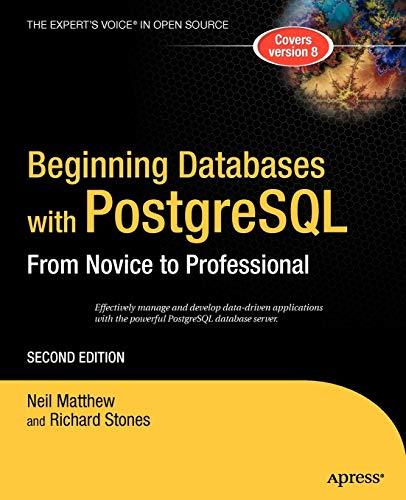Question
In this question, a small bank in town used to keep deposit amounts using 16-bit words in big endian format with 8-bit cells on their
In this question, a small bank in town used to keep deposit amounts using 16-bit words in big endian format with 8-bit cells on their old computer. Words were kept using twos complement representation to allow for negative balances (it was possible to overdraw without penalties at one time) and cents were not recorded. The original balance amounts for two test accounts were as follows: Account A, -$91 (minus 91); account B, $29317. During an upgrade to the banks program, several programmers worked on the conversion and in the absence of documentation wrote code to interpret the original data by reading it byte-by-byte and piecing it together according to their assumptions. Find the balances of the two accounts (in base 10) for the following interpretations. Show all intermediate steps including binary values.
a) Little-endian format (the original twos complement representation)
b) Little-endian format (unsigned).
c) Big-endian format (twos complement)
d) Encode all three accounts in Hamming Code by using the binary values in part a and giving the binary representation for the balance in each account.
e) Encode all three accounts as IEEE floating point single precision numbers and write the 32-bit representation for each balance.
Step by Step Solution
There are 3 Steps involved in it
Step: 1

Get Instant Access to Expert-Tailored Solutions
See step-by-step solutions with expert insights and AI powered tools for academic success
Step: 2

Step: 3

Ace Your Homework with AI
Get the answers you need in no time with our AI-driven, step-by-step assistance
Get Started


